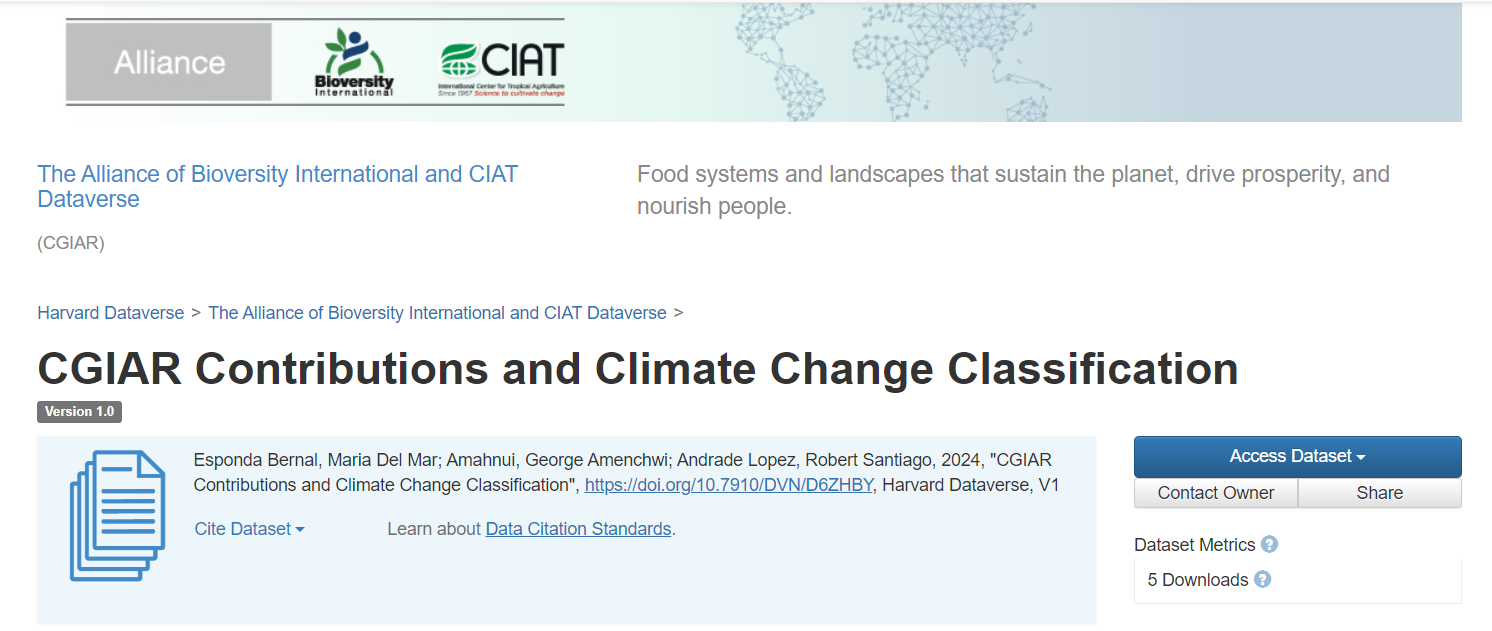CGIAR Contributions and Climate Change Classification
It includes the 36 Golden Eggs, along with the 61 innovative breakthroughs classified by their relation with Climate change approaches Methodology: In order to analyze the innovations developed by the CGIAR to determine whether they were aimed at climate change adaptation or mitigation (or both), the dataset was meticulously compiled from two different sources. First, we examined the esteemed publication entitled "36 Golden Eggs for the 2021 Transfer Market Place." These 36 notable research assets were carefully selected during a virtual forum held in June 2021. This forum brought together current custodians of the esteemed CGIAR scientific community, fostering multiple discussion sessions aimed at prioritizing these assets (2024-01). Second, the 61 innovative breakthroughs were included, dubbed the 50 years of CGIAR innovations that changed the world.
Mitigation, as defined by the IPCC, entails human interventions to reduce the sources or enhance the sinks of greenhouse gases (GHGs). Similarly, according to the IPCC, adaptation refers to the process of adjusting to current or anticipated climate conditions and their effects. In human systems, adaptation seeks to moderate or avoid harm and exploit beneficial opportunities arising from climate change.
In simple terms, when we talk about a direct relationship in a project, it means that the project has the ability to positively influence greenhouse gas emissions or the effects of climate change as it unfolds. On the other hand, when we talk about an indirect relationship, we mean that the project does not have an immediate impact but can be a tool used later to support the execution of a direct project that does have that direct impact on emissions or climate effects. (2024-01)

